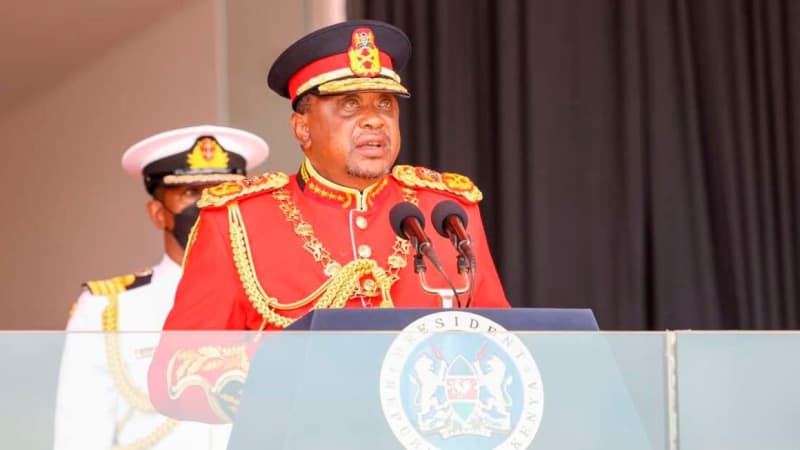
Kenya has dropped its push to force power producers to lower tariffs in the wake of opposition from the foreign firms in the planned review that was intended to cut consumer bills by up to a third ahead of Christmas.
The independent power producers (IPPs) who are owned by powerful institutions like the World Bank opposed unilateral push to lower the cost at which they sell electricity to Kenya Power, setting the stage for a legal battle.
President Uhuru Kenyatta had promised in August to cut consumer electricity tariffs by 33 percent ahead of Christmas in a plan that hinged on a review of power purchase agreements (PPAs) signed over the years.
But the IPPs opposed the reduction, arguing that Kenya has no unilateral right to alter the contracted capacity and payments, saying instead that the State has a duty to protect PPAs — which are inked over a period of 20 years.
They reckoned that they spent billions of shillings in building power plants through a combination of debt and shareholder funds that were sourced on the strength of the PPAs or wholesale electricity tariffs.
“We have sank billions in the power plants, and Kenya can’t just wake up and abrogate contracts. They have a duty to honour the contracts,” a top official of one of the IPPs told Business Daily yesterday while seeking anonymity for fear of State reprisals.
“We support the plan to make power cheap, but it cannot be done unilaterally or through decisions of a task force. The government must approach each power plant individually for a deal because each plant is unique.”
The fear of a legal tussle with powerful foreign investors forced the State to retreat, opting to first reduce electricity prices by 15 percent this month by passing to homes and business benefits that will come with reduction of power theft and leakages in Kenya Power’s transmission network.
On Sunday, President Kenyatta said another 15 percent cut will be effected in the first quarter of next year once the State reaches a deal with the IPPs.
“The reduction of the cost of electricity will be implemented in two tranches of 15 percent each with the first 15 percent achieved through initial actions focusing on system and commercial losses, to be reflected in the December bills and a further 15 percent reduction in the first quarter of 2022,” Mr Kenyatta said in his Jamhuri day speech.
The Business Daily was unable to establish how Kenya Power will reduce system losses, the share of electricity bought from generators such as KenGen that does not reach homes and businesses, within weeks despite battling for decades to cut power theft and leakages.
The combination of power theft and leakages from the ageing transmission grid, which stems from the long period of under-investment, has seen the system losses rise from 17.51 percent in 2015 to 24.14 percent for the year to June, well above the global benchmark of 15 percent.
The losses at 24.14 were worth Sh20.1 billion.
The 15 percent reduction in the cost of power is equivalent to Sh18.8 billion based on Kenya Power sales of Sh125.9 billion in the year to June.
This has the potential to pull Kenya Power back into losses without a substantial reduction in power theft and leakages.
The power firm and Safaricom are working on a proposal where the telecoms operator would install and operate a $300 million smart meter system, which allows real-time monitoring of the grid, to cut the power system losses by eight percentage points in two years.
Safaricom proposes to split the additional revenue generated from lower system losses, projected at Sh71.7 billion over eight years, with 75 percent going to Safaricom and 25 percent to Kenya Power.
The proposal is yet to be approved.
Electricity consumers often complain of steep bills, which are partially due to idle capacity charges that compensate power generators for electricity that is generated but never used.
Under a typical power purchase agreement, a power producer gets paid for any electricity produced, even if it is impossible for Kenya Power to sell it to consumers because of reasons including excess production.
The cost of power is a key determinant of new investments. Electricity prices have nearly doubled since President Kenyatta rose to power in 2013, with 50 units rising from Sh508 in July 2013 to Sh925 in October.
A task force appointed by President Kenyatta found that there was a huge disparity between the tariffs charged by main power producer Kenya Electricity Generating (KenGen) and independent power producers.
KenGen’s prices were much lower than those of the independent power producers. Kenya Power bought 46 percent or Sh41.1 billion of its electricity from State-controlled KenGen with other top producers being wind plant—Lake Turkana Wind— and US-based geothermal firm, OrPower 4 Inc.
More than half of Kenya Power’s Sh89.1 billion power purchase costs are capacity charges paid to power producers.
Only 8.3 percent of power comes from costly thermal plant with cheaper geothermal and wind having accounted for 59.8 percent of electricity bought by Kenya Power for onward supply to homes and businesses.
https://www.businessdailyafrica.com/bd/economy/why-uhuru-electricity-price-promise-failed-3650604
–>
